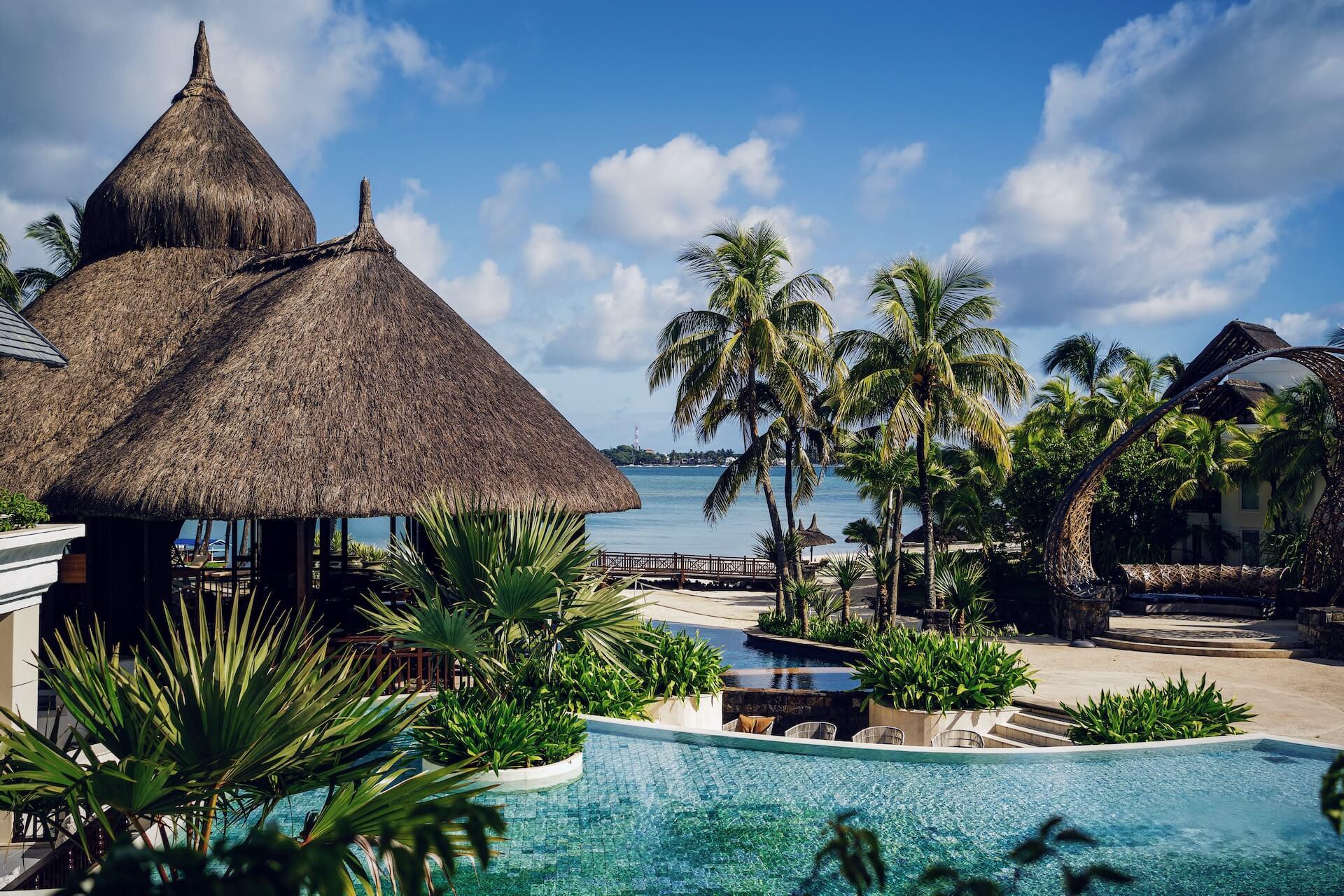Mauritius has conjured up beautiful scenery for us to relax on its white beaches, observe the underwater life in its coral lagoons and pamper ourselves at its luxury resorts. But you'll also love exploring the landscape of plantations, colonial villas, volcanic rock formations, waterfalls and hiking trails through the tropical countryside. Plus the amusing combination of Indian, Creole and colonial cultures adds to its charm.
Basic information
Mauritius can be found in the Indian Ocean less than 1,000 km east of Madagascar and forms the Mascarene archipelago along with the islands of Rodriguez and Reunion. It is a volcanic island surrounded by a coral reef that protects shallow lagoons and a coastline covered in white sand. Mauritius measures 58 km from north to south and 47 km from east to west and has a small population of over one million people, most of whom live on the north-east coast and central plains.
For getting around, a hire car is best; anywhere on the island can be reached within an hour and a half, so there are plenty of opportunities for excursions. Although the official language is English, the population speaks Creole. Although Mauritius lies off the coast of Africa, it is influenced mainly by Indian life and the customs of European colonialists.

Port Louis
The island's capital is the port city of Port Louis on the northeast coast. A fortress towers over the city, and below it the centre is made up of mostly modern buildings of poor architectural quality, with colonial houses clustered among them. Only the government quarter and the fashionable Caudan Waterfront promenade are more picturesque. Here you can browse the European complex of shops, casinos, cinemas and cafes. At the end of it you'll find the best hotel in town, as well as the Blue Penny Museum, home of the famous Blue Mauritius postage stamp.
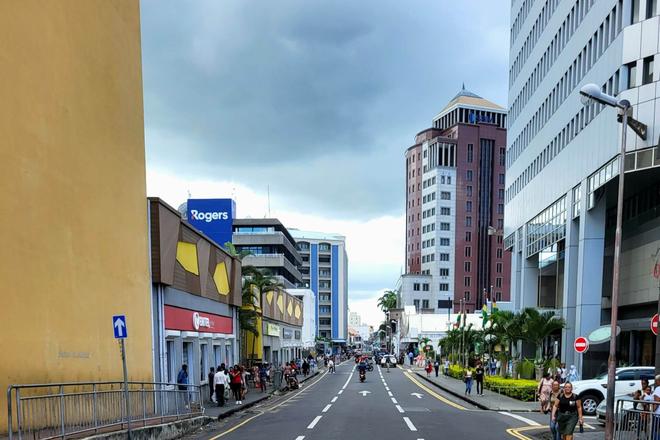
The city centre is bustling and you’ll be greeted with the smell of Indian food. It is especially worth a visit as an interesting example of the coexistence of many ethnicities and religions. The most prominent non-Indian community here lives in Chinatown, whose gateway is right next to skyscrapers with banks and offices. You should also visit the main market, called Central Market. Here, too, you can take in all the colours and smells of the Orient. North of the city you will find many Tamil temples that look like miniature versions of their South Indian ancestors. The temple entrances are decorated with pastel colours and figures from Hindu mythology. Beyond the city, the green Moka Mountains peek out, whose highest peak, the towering Le Pouce Thumb (812m), is a half-day hike.
West coast – white beaches, lively bustle
While the north-east coast is plagued by high winds and cyclones most of the year, the north-west is better sheltered and the weather is friendlier. The coast north of Port Louis is therefore continuously populated with villages and towns with many hotels, town beaches and restaurants. Although the beaches tend to be shorter, this does not detract from their beauty. Among the most beautiful are Trou aux Biches Beach, Pereybere Beach and La Cuvette Beach.
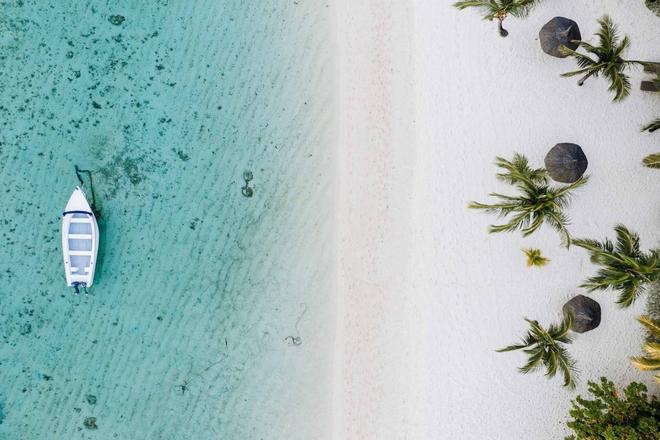
To the south of Port Louis, the cane fields diminish and the forests and pastures increase, with jagged mountains rising above them. Here lies the fast-growing tourist resort of Flic en Flac. It caters for younger guests and provides plenty of disco entertainment into the early hours. From the white beaches you can reach the diving sites of Rempart Serpent or La Cathédrale in 15 minutes. In both cases, you can admire not only schools of colourful coral fish, but also the beautiful and jagged underwater landscape. Further south of Flic en Flac lies Tamarin, good for surfing or morning dolphin watching, and below the Grand Rivière Noir, mangrove swamps form the coastline.
Le Morne and Mont Brabant – the icon of Mauritius
A beautiful four kilometre long white beach reappears in front of the Le Morne Peninsula peninsula with the landmark and symbol of the island, Mont Brabant. Only a few luxury resorts have sprung up in the palm groves along the coastline in this area, where you can experience the paradisiacal tranquillity of tropical Mauritius. The best view of the Le Morne Peninsula lagoon is from the top of Mont Brabant. The hike up the mountain takes about 3 – 3.5 hours, the trail is about six kilometres long and at the top you will climb on rocks with the help of belay ropes.
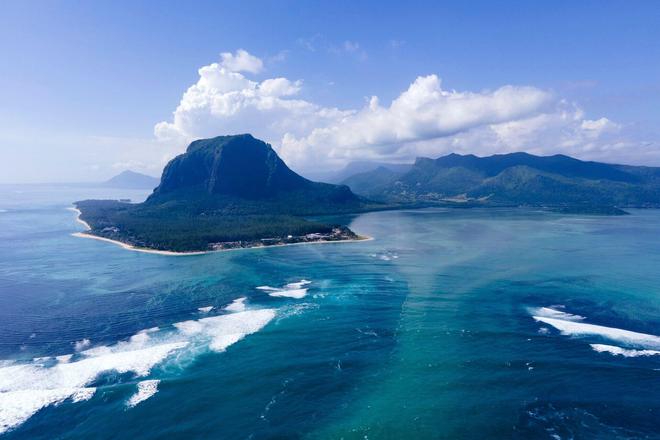
Rivière Noire National Park – easy hiking through dense forest
In the forests above the UNESCO World Heritage-listed Le Morne Peninsula, the highest mountain in Mauritius, the 828-metre Piton de la Petit Rivière Noire, rises. Although the national park surrounding the mountain is inhabited and part of it is made up of coffee plantations, the steep slopes and valleys of the Black River are covered with dense forest. There are roads through the park, as well as a number of marked, relatively short but sometimes challenging hiking trails, including a climb to the highest point on the island. You have to be very flexible with your schedule, because if it rains, the trails turn to slippery mud and the views are nonexistent.
Chamarel – waterfalls, rum and seven colours
West of the national park lies the village of Chamarel. The only way to get here is by narrow and winding roads through sugar cane plantations. Nearby you will find three attractions. The first is the most beautiful of Mauritius' waterfalls, the Chamarel Waterfall. Here the water falls into a semi-circular depression covered with lush vegetation and you can take a short walk to the viewpoint. Not far from here you'll also find the Seven Coloured Land – hills made up of soil rich in volcanic iron and aluminium compounds, which colour it in shades of red, blue, green and yellow. And finally, a stop at the Chamarel Rumery. Here you can learn all about sugar cane processing and rum production. You can taste the rum or have a delicious lunch. They have a restaurant run by a Michelin-starred chef.
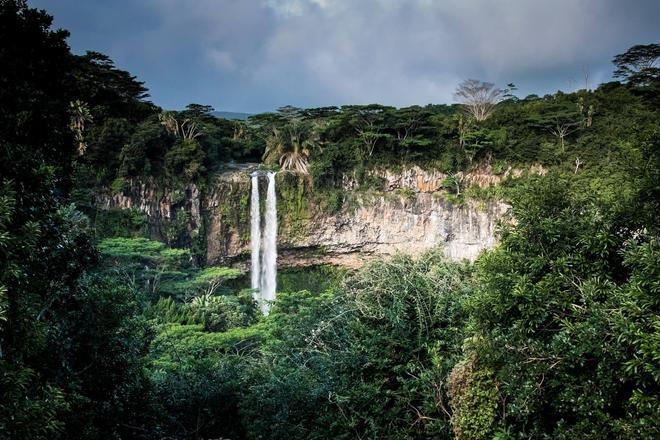
Grand Bassin – the sacred lake of Shiva
To the east of the park, you can visit the tea plantations of Bois Cheri. As well as strolling through the photogenic tea bush-fringed hills, you can stop at the colonial mansion and sample the local tea. A short distance from the tea plantation is the sacred Grand Bassin Lake in an old volcano. It is the most important pilgrimage site for Hindus outside India, and during the February festival of Maha Shivaratri, pilgrims flock here on foot from all over the island. The lake is surrounded by temples that you can peer into, and almost anytime you visit you will come across a ceremony.
East Coast – Intimate Resorts and Blue Lagoon
The rugged northeast coast is wild and sparsely populated due to the wind. The local headlands, with their beautiful long white beaches, have become a destination for photographers and tourists heading to the intimate luxury resorts on each headland. A significant low tide for a few hours a day makes swimming difficult, but this is balanced by the offer of huge overflow pools.
In the middle of the east coast lies Île aux Cerfs, which at low tide joins the sand spit with the coast to form a magnificent beach. Popular catamaran snorkelling trips end there and at the bar on the islet, and take you to the mouth of the Grand River South East to the river's waterfall.
On the south-eastern tip of Mauritius, you'll find mid-range resorts and ideal snorkelling conditions, in addition to the airport at Mahebourg. In the Blue Lagoon, you can swim to the coral reef directly from the shore. Unfortunately, the El Nino effect caused a temporary bleaching of the coral a few years ago, when the algae providing the colour disappeared, but there are still plenty of fish to be seen.
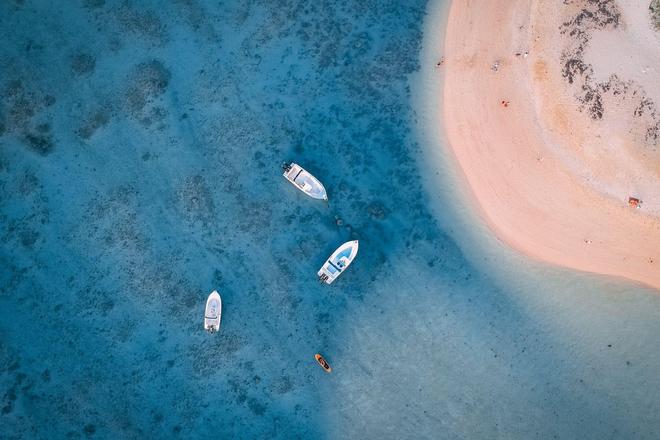
What else to see in Mauritius?
Pamplemousses – the oldest botanical garden in the southern hemisphere. Typical are the giant water lilies and the talipot palm, which blooms once every 60 years and then dies, as well as many other native plants that your guide will show you during a pleasant walk through the park.
The Trou aux Cerfs – a symmetrical crater, 85 metres deep, whose inner walls are covered with shrubs and at the bottom of which a small lake glistens like a dull black eye.
Villa Eureka – a restored colonial mansion in a beautiful garden where you can dine luxuriously like in the old days. From the villa you can take a walk to the small but interesting waterfalls of the Moka River.
Curepipe – a colonial town dating from 1867 when Europeans moved from the sea to the plateau. They were fleeing malaria and seeking a more pleasant climate. To the southwest lies Tamarin Falls with several hiking trails. From Curepipe, a mountain road leads to the Rivière Noire National Park nature reserve. After six kilometres you reach the Mare aux Vacoas dam, surrounded by mature conifers and casuarinas.
